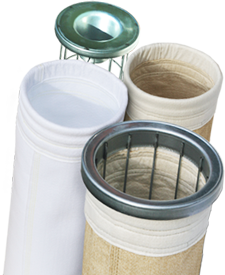Maintaining a healthy and safe working environment requires clean air, especially in industries where dust and particulate matter are generated. Dust collector systems play a vital role in efficiently eliminating airborne pollutants and safeguarding workers. The core component of these systems is the filter bag, responsible for capturing and retaining dust particles. In this comprehensive guide, we will explore the world of dust collector filter bags, including different types, factors impacting their effectiveness, and essential tips for optimizing air filtration efficiency.
Types of Dust Collector Filter Bags
Filter bags are available in various base materials and configurations, each designed for specific industrial applications. The most common base material types include:
a. Polyester Filter Bags: These versatile filter bags effectively capture general dust and particulate matter. They have excellent resistance to moisture and chemicals, making them suitable for diverse industrial settings.
b. Polypropylene Filter Bags: These filter bags are known for their exceptional chemical resistance, making them ideal for processes involving aggressive chemicals and acidic materials.
c. Aramid Filter Bags: Aramid filter bags offer excellent temperature resistance, making them suitable for high-temperature applications like metalworking and foundries.
d. PTFE (Teflon) Filter Bags: These filter bags demonstrate superior chemical resistance and temperature range. They are used in the most harsh chemical areas of a manufacturing facility..
e. Fiberglass Filter Bags: Designed for high-temperature and large volume filter applications, fiberglass filter bags provide excellent durability and efficiency.
Factors Influencing the Efficiency of Filter Bag Performance
To achieve optimal air filtration efficiency, it is important to take into account several factors that impact the effectiveness of dust collector filter bags. These factors include:
Particle Size: The size and shape of the dust particles play a critical role in determining the appropriate filter bag base material and the surface treatment of that base material. Different filter media and/or surface treatments may be required based on the particle size distribution of the gas stream being filtered.
Air-to-Cloth Ratio: This ratio measures the airflow against the filter bag’s surface area. Low A/C ratio means better flow but also a larger collector ($$). A balanced ratio ensures proper filtration without incurring unnecessary higher costs.
Dust Concentration: Higher dust concentrations necessitate filter bags with greater dust-holding capacity to prevent clogging.They also demand an intelligent cleaning process to release the dust cake and maintain proper flow through the dust collector
Moisture Content: Moisture can reduce the efficiency of filter bags and lead to high pressure drops. If moisture cannot be avoided then material and surface selection becomes critical.
Tips for Maximizing Filter Bag Efficiency
Regular Inspection and Maintenance: Implement a routine inspection schedule to check for wear, damage, or insufficient cleaning. Promptly replace damaged bags to maintain optimal filtration efficiency.
Proper Installation: Ensure filter bags are correctly installed with a tight seal to prevent bypassing of dust-laden air.
Cleaning/ Shaking: Periodically confirm that the cleaning/shaking process is working as intended. Adjust to create a steady state of differential pressure at an acceptable level for the process being filtered.
Monitor Differential Pressure: Regularly monitor pressure drop to determine if cleaning is working as intended or replacement is necessary.
Bag Preconditioning: Preconditioning filter bags before installation can enhance performance and improve filtration efficiency. This is especially true when replacing 10% or more of the filter bags in a given collector
To optimize air filtration efficiency in industrial settings, it is crucial to understand the different filter bag options and consider the various factors that affect their performance. By adhering to regular maintenance practices and making informed decisions, industries can ensure clean working environments while complying with regulations.


